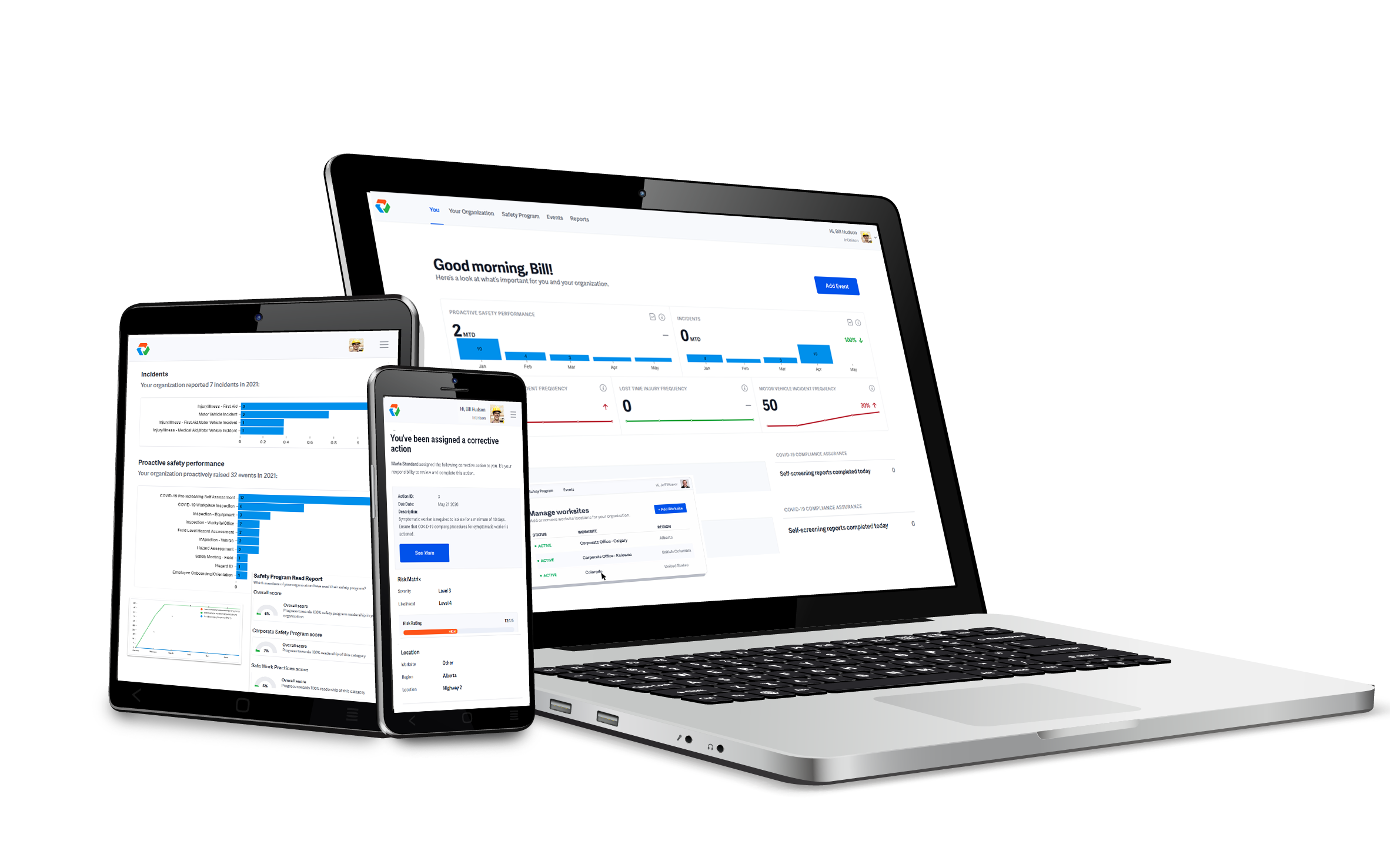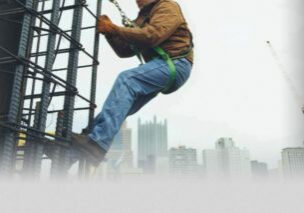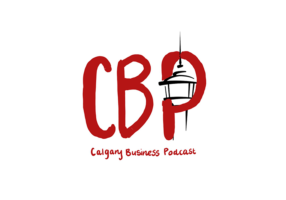Fatigue Management
Posted: Dec. 7, 2021

Introduction
There is no question that we have all experienced fatigue at some point in our lives. The effects of fatigue can range from a minor inconvenience to significant health impacts depending on how long and to what degree we experience fatigue. Fatigue does not sign out when we leave the workplace. It follows us throughout the day in everything we do and plays a critical role in our everyday lives. Therefore, it is essential to recognize fatigue's presence in our daily lives regardless of how big or small its effects feel.
Poor sleep can be caused by a number of factors such as not enough hours, lack of quality sleep, irregular shifts, physically or mentally demanding work, workplace tasks, or even environmental factors like temperature and noise or light levels when you are sleeping. Sometimes our over tiredness can be an accumulation of one or several of these factors.
As fatigue sets in, we feel ourselves start to cut corners to save time or energy. Ultimately, this reduces our ability to perform tasks safely and effectively and creates more opportunities for injury and other hazards to occur.
The impact of fatigue can take many shapes, including reduced:
- Alertness and vigilance
- Reaction time and the ability to react appropriately
- Memory and recall
- Ability to make effective and/or quick decisions
- Information processing
- Effective communication

Fatigue in the workplace
"Workers' fatigue is a significant problem in modern industry, largely because of high demand jobs, long duty periods, disruption of circadian rhythms, and accumulative sleep debt that are common in many industries." (Sadeghniiat-Haghighi, K., & Yazdi, Z. 2015).
In Sadeghniiat-Haghighi's study on fatigue management, researchers found that fatigue in the workplace was a common complaint that employees would report to their general physicians between 7- 45% of the time.
Making safety-critical errors resulting in injuries is more likely to happen when workers are fatigued. The National Safety Council informs us that studies have found that workers with sleep problems have a 1.62 times higher risk of injury than workers without sleep problems. The study also estimates that about 13% of work injuries can be attributed to sleep problems. Techera’s (2016) study on the Causes and Consequences of Occupational Fatigue shows us that US businesses lose more than $100 billion per year to fatigue-related absenteeism and reduced productivity.
Typically, adults need between 7 - 9 hours of sleep per night to contribute to optimal health. However, many life factors can make it challenging to maintain the recommended sleep standard. Even though disruption may occur in our sleep schedule, we don't have to accept that we must go through life constantly tired. We as individuals and our employers can implement practices to help minimize fatigue and improve sleep.

Know what to do if you feel too tired to work safely
- Use a buddy system while you're at work. Check in with each other to ensure everyone is coping with work hours and demands.
- Watch yourself and your coworkers for signs of fatigue — like yawning, difficulty keeping your eyes open, and difficulty concentrating. When you see something, say something to your coworkers so you can prevent workplace injuries and errors.
- Find out if your employer has a formal program to help you manage fatigue on the job. Read information about the program and ask questions so you fully understand your employer's policies and procedures for helping employees manage fatigue.
- Report any fatigue-related events or close-calls to a manager to help prevent injuries and errors.
- Do not work if your fatigue threatens the safety of yourself or others.
- Report to a manager when you feel too tired to work safely.
What can employers do to reduce workplace fatigue?
The first step is recognizing what roles and tasks your employees participate in that may come with increased stress that can cause burnout. It might even be caused by a particular 'season' at work when things get busier and create higher demands on your team. Knowing this will allow you to be more aware of the onset of fatigue. Be sure to keep an eye out for signs and symptoms of fatigue (e.g., yawning, difficulty keeping eyes open, inability to concentrate) in yourself and your employees and be ready to intervene so fatigue-related injury or error can be mitigated. When you create a culture around safety and facilitate clear communication and coordination around those standards, employees are better prepared to understand the process and their role in maintaining the safety of themselves and others. Employers can implement a fatigue risk management system (FRMS) to help manage worker fatigue. FRMS is designed to create a flexible operating environment where potential fatigue risks can be highlighted and managed. When executed proactively, teams can anticipate and address fatigue-related risks and adjust their systems to minimize the effects and risk.
Here are a few helpful tactics to create awareness around fatigue in the workplace and create steps to
- Post the Epworth Sleepiness Scale in a common area so workers can quickly rate their fatigue.
- Create a procedure that encourages camaraderie among employees around supporting each other when someone is too fatigued to work safely.
- Eliminate any fear of punishment.
- Develop processes to relieve a worker from their duties if they are too fatigued to work safely.
- Allow staff enough time to organize their off-duty obligations and get sufficient rest and recovery.
- Provide knowledge and resources to educate staff on the effects of sleep deprivation and how to manage their fatigue.
Helpful tips
When we take all the right measures to keep our teams healthy and safe, we are also ensuring the continuity and prosperity of our business. There are so many facets to safety that sometimes we can’t possibly undertake them all. But luckily there are experts that help guide us in taking the right steps. Reaching out and starting the conversation with your employees on what they need is a great first step, consulting with experts that can help you facilitate these needs is a fantastic follow up step. If you are in need of further assistance, book a consultation with one of our experts.
Below are tips from the CDC to improve sleep and tactics to implement when you're feeling too tired to work safely:
- You'll sleep better if your room is comfortable, dark, cool, and quiet.
- After you've worked a long stretch of shifts, remember it may take several days of extended sleep (for example, 10 hours in bed) before you begin to feel recovered. Give yourself time to recover.
- Avoid sunlight or bright lights 90 minutes before you go to sleep, when possible. Exposure to light just before bedtime can cause you to feel more awake.
- If you work a night shift and drive home during sunlight hours, try wearing sunglasses to reduce your exposure to sunlight during your drive home.
- Consider using blackout shades at home when sleeping.
- Take naps when you have the opportunity.
- A 90-minute nap before working a night shift can help prevent you from feeling tired at work.
Visit the CDC website for more helpful tips.
Resources:
- Sadeghniiat-Haghighi, K., & Yazdi, Z. (2015). Fatigue management in the workplace. Industrial psychiatry journal, 24(1), 12–17. https://doi.org/10.4103/0972-6748.160915
- Techera, Ulises MS; Hallowell, Matthew PhD; Stambaugh, Nathan BS; Littlejohn, Ray PhD Causes and Consequences of Occupational Fatigue, Journal of Occupational and Environmental Medicine: October 2016 - Volume 58 - Issue 10 - p 961-973 doi: 10.1097/JOM.0000000000000837
- What Workers and Employers Can Do to Manage Workplace Fatigue during COVID-19. (2021). Retrieved 1 December 2021, from https://www.cdc.gov/coronavirus/2019-ncov/hcp/managing-workplace-fatigue.html
- Work-related Fatigue - Injury Facts. (2021). Retrieved 1 December 2021, from https://injuryfacts.nsc.org/work/safety-topics/work-related-fatigue/
Please contact your InUnison safety representative if you require any assistance with your health and safety system or assistance with your fatigue awareness programs.
A safety trainer in your pocket
Full safety program
Built by safety experts
Use it online, on any device

Related Articles

Pinch Points
Introduction There is no question that we have all experienced fatigue at some point in our lives. The effects of […]
Read Article
Controlling Blood-Borne Disease in the Workplace
Introduction There is no question that we have all experienced fatigue at some point in our lives. The effects of […]
Read Article







